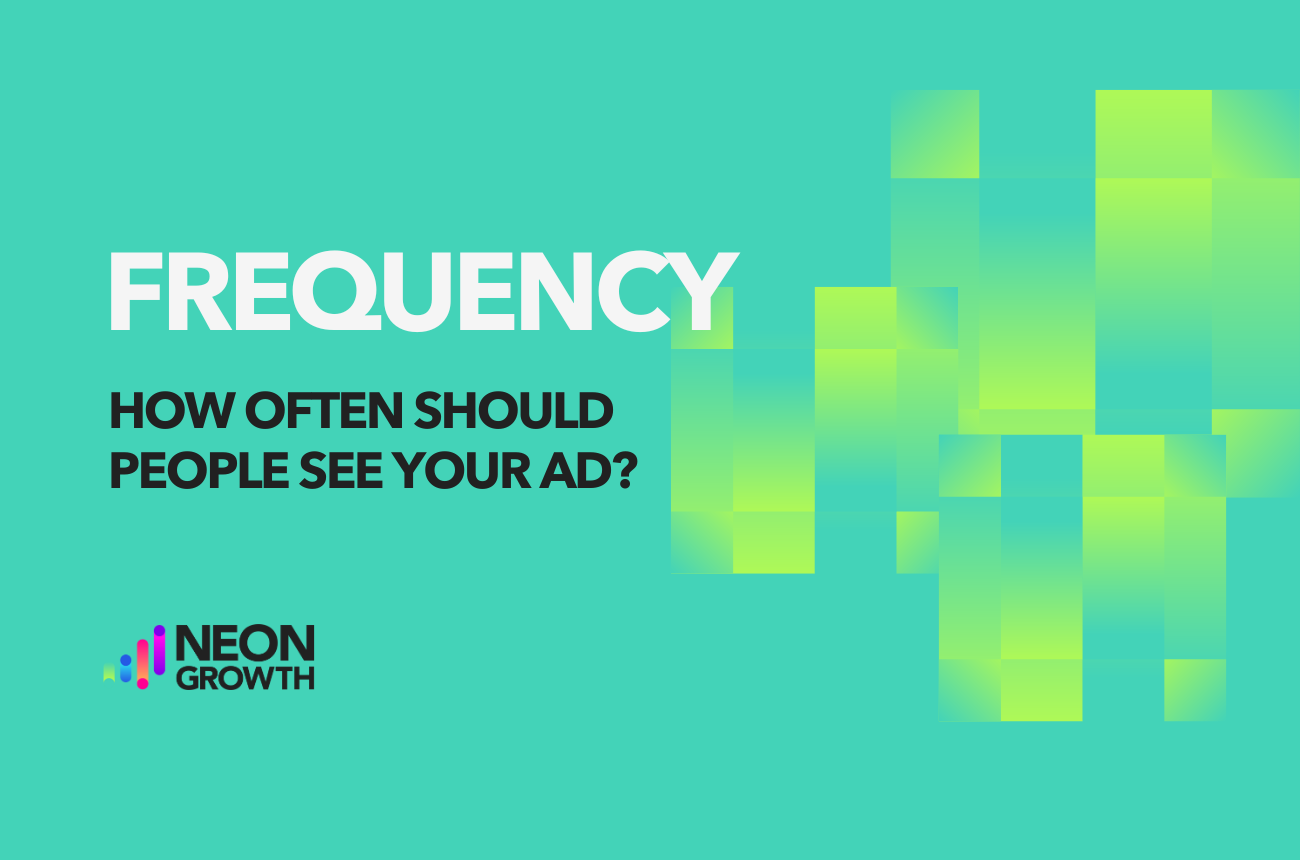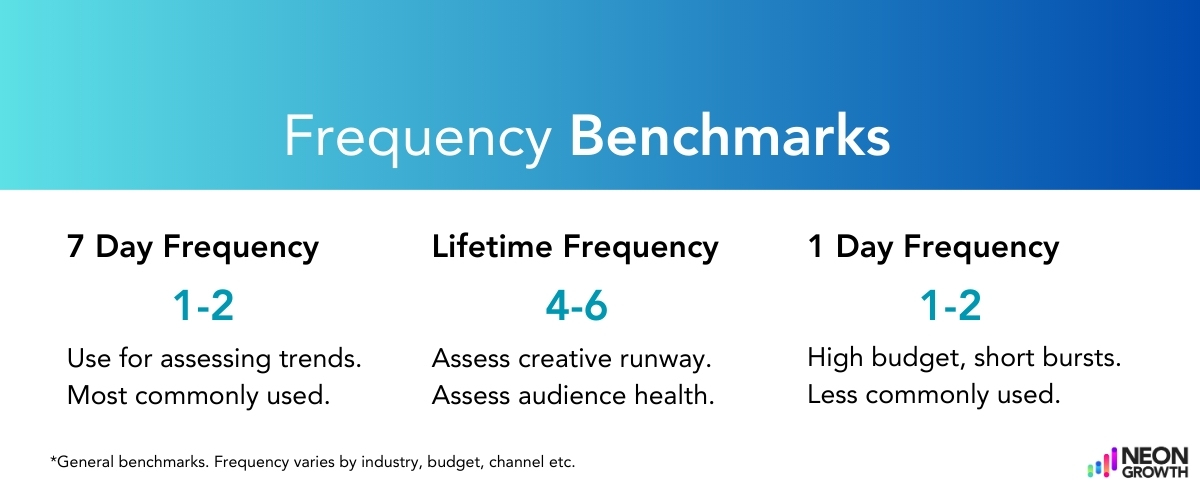Copyright Smart Link 2023. Data & Privacy
Frequency: How Often Should People See Your Ad?
Published on
August 16, 2023

Frequency refers to how often your audience is being shown your ad in a given time frame.
As your audience sees the same ad creative multiple times, they tend to develop “ad blindness”. While it can take a few exposures to grab attention, there is a point of diminishing returns. Meaning, you’re not likely to see more results by continuing to run the ad. Aka wasted budget.
Meta research finds that after 4 repeat exposures, click-through rates (CTR) drop by 40%. Even more concerning, conversion rates (CVR) drop by 60% after 4 consecutive views by the same user. Meaning, the first impression is approximately 316% more effective than the fourth impression. This is exactly why our team takes a highly proactive approach to managing ad frequency.

The ideal frequency in digital marketing varies significantly by industry and price points. For example, a niche high-ticket item will likely require higher frequencies to account for a more lengthy consideration phase. Inexpensive items with mass audience appeal typically have less complicated buying decisions, and lower frequencies.
Audiences may also fatigue, especially when served stale assets for a long time. This occurs most often with narrow audience sizes. There are also different time frames to consider, but more on this later.
How Often Should People See Your Ad?
The most important metric to understand when diagnosing creative fatigue is frequency. Frequency estimates the average number of times a person sees your ad in a given time frame. It’s calculated by dividing impressions by reach.
For prospecting campaigns, a frequency between 1 to 2 is considered optimal (over a 7-day period). A study by Facebook found a 7-day frequency of 1 captured 80% of potential brand lift. Increasing to a frequency of 2 captured 95% of potential brand lift.
Another analysis of over 10,000 ads by Social Media Today suggests a frequency between 1.8 to 4 to balance increasing CPAs.
In retargeting campaigns, this metric ranges higher as the audience is generally smaller. Repeated exposure is also valuable for receptive mid- and bottom-funnel audiences.
High frequency may be useful in cases where you’re trying to build brand awareness and recall. Holiday seasons, short burst campaigns and new offerings also benefit from higher exposure strategies.
In some ad platforms, you can apply a “frequency cap” to limit the number of times a person sees an ad. But, this is typically only recommended for reach and awareness campaigns.
Optimal 7-Day Frequency by AOV
Overall, factors that influence frequency include your potential audience size, budget, and scheduling. When this metric rises, your audience may be too narrow, or the budget may be too high for the audience size. Narrowing when your ad gets shown may also limit the diversity of users.
If an ad with high frequency is otherwise hitting your KPI targets, no need to be alarmed. But, be aware that creatives do typically fatigue faster as exposure increases.
Frequency Windows: Applying Date Ranges Effectively
The most commonly used timeframe for assessing frequency is a 7-day period. This tells you on a week-over-week basis how your creatives trend. The benchmarks of 1-2 for prospecting and 2-3 for retargeting are based on the 7-day window.
Lifetime frequency helps reveal the overall runway your ad creatives have left. Lifetime values also share insights into audience fatigue.
Generally, a lifetime retargeting frequency around 4 to 6 is considered a good benchmark to avoid diminishing returns. For retargeting, Wordstream found increasing conversions with up to 6 ad exposures, but declining CVRs afterward. Other research indicates CTR drops as much as 50% after a lifetime frequency of 9.
1-day frequency is primarily mostly useful for high-budget ($25K+/day), short duration campaigns. If you significantly increase budgets during a holiday campaign for example, it's important to monitor frequency to spot early creative burnout.

Want to learn more? Get in touch today to learn how we can help your business achieve its advertising goals.
No items found.

